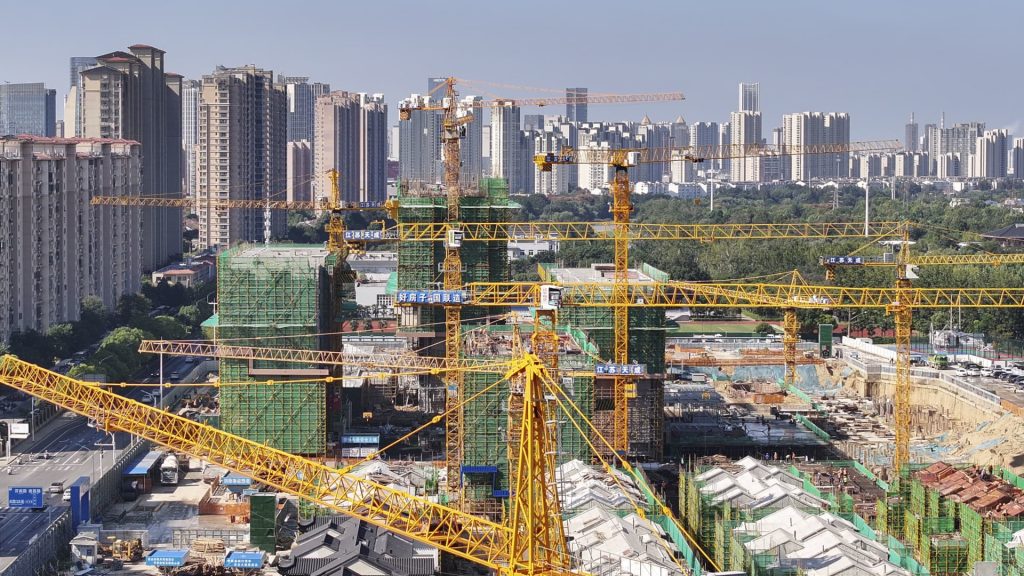Pictured here is construction on a real estate project in Huai’an City, Jiangsu Province, China on October 9, 2025.
Cfoto | Future Publishing | Getty Images
BEIJING — China’s real estate market is expected to fall more sharply than expected in 2025, extending an industry slump for a fifth-straight year and delaying hopes of a market turnaround, S&P Global Ratings said in a report late Thursday.
The analysts project sales of new homes will drop by 8% from last year to between 8.8 trillion yuan and 9 trillion yuan ($1.23 trillion to $1.26 trillion).
That’s a far steeper decline than the 3% drop the major ratings agency had predicted in May. At the time, the analysts expected the trade war and other external uncertainties would have pushed China to roll out stronger support for the real estate sector, Edward Chan, director, corporate ratings at S&P Global Ratings, told CNBC.
The main reason for the weaker outlook is that “homebuyers’ sentiment is still pretty fragile,” Chan said. “So the government will need to continue to support the sector and demand [to] help restore homebuyers’ confidence.”
In September 2024, Beijing called for efforts to “halt” the real estate decline in a high-profile meeting. But after some new measures last year, the political momentum to ramp up further support appeared to slow.
S&P noted that China’s five-year loan prime rate — the benchmark for most mortgages — has only fallen by 10 basis points so far this year, compared with a 60-basis point reduction in 2024. This signals that Beijing isn’t easing policy as aggressively as before, despite the property slump.
In August, three of China’s largest cities eased purchase restrictions to allow buyers to hold multiple properties, but the move mostly applied to units in the less desirable city outskirts, S&P noted.
“If demand can be stabilized first in the higher-tier cities, particularly in the first-tier [largest] cities first, that would probably help the trajectory of the demand recovery to be more sustainable,” Chan said.
Turnaround remains elusive
For now, hopes of a bottom in China’s real estate slump look even more distant.
With sales projected to be 9 trillion yuan or less this year, China’s property market will have halved in just four years, from 18.2 trillion yuan in 2021, according to S&P. The ratings agency expects sales to fall by another 6% to 7% in 2026, with primary home prices down by 1.5% to 2.5%.
In past decades, homebuyers in China have tended to buy apartments ahead of completion. But as developers ran into financial difficulties, construction was delayed, shaking consumer confidence. This prompted Beijing last year to announce a “whitelist” to fund approved unfinished projects.
As of August, completed, but unsold housing inventory had climbed to 762 million square meters, up from 753 million square meters in December 2024, S&P said.
“The government has been doing quite a lot to assure people [that getting] their apartments isn’t the issue now,” Chan said. “The issue is the overall demand for the nation as a whole seems to be weaker than we expected.”
Going forward, he expects the government will step in, even if incrementally, when market weakness appears.
August saw both a relaxation in some home purchase restrictions and a high-profile acknowledgement by Chinese Premier Li Qiang that the real estate slump remained unresolved, indicating the need for more support.
The following month, sales by China’s top 100 developers rose 0.4% year over year, S&P said, citing industry data.
As developers strive to survive, the report said, “the end result may be a smaller market, but also a healthier and more resilient sector.”


